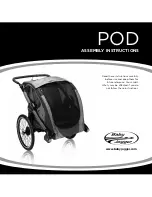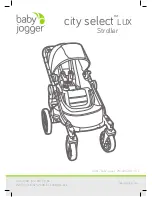
Refrigerating Specialties Division
6
Disassembly and Assembly (continued)
Basic Modules Disassembly and Assembly
Refer to exploded views (Figs. 10 and 11) and also page 3 for
explanation of “Basic Adaptomode Functions” to assist in clarification
of module placement, as discussed in this section. Before
disassembling and assembling any modules, refer to page 4 of this
bulletin and to Bulletin RSB, Safety Procedure for Refrigerating
Specialties Division Refrigeration Control Valves.
Modudapter
The Modudapter 28 will accommodate the Modular Pilots and
Moduplates illustrated on page 3. When assembling make sure the
Modudapter gauge port is directly lined up with the inlet of the regulator.
Passage N must communicate upstream pressure through the hole in
Adapter Gasket 29 as well as into Modudapter 28 and thence to the
pilot modules. It is imperative that proper alignment of these items be
made to assure regulator function.
Before disassembly, make sure all refrigerant has been removed
from the regulator and strainer, if used.
Protect the surfaces of Pads 1 and 2 of the Modudapter at all times
since these surfaces determine the sealing tightness of the “O”
Rings.
A2D, A2D2 Modular Pressure Pilots (Figs. 11 and 12)
These pressure pilots are used where a dual pressure regulator is
desired and is mounted on Pad 2. Follow the disassembly and
assembly procedure for the A4A pilot (pages 4 and 5). When mounting
the pilot, place the “O” Rings 50 into the proper grooves and tighten
the Cap Screws 49 evenly. The ideal tightening torque is 1.1 Kg-m (8
ft. lbs).
S6A Modular Solenoid Pilot (Figs. 10 and 12)
This solenoid pilot may be mounted on either Pad 1 or 2 depending
on the function desired (see pages 2 and 3). Before working on any
Fig. 11
A2D2, A2D MODULAR
PRESSURE PILOT
A2D2 Port Sizes 20-50mm (3/4" - 2")
A2D Port Sizes 65-100mm (2½" - 4")
1
2
3
4
5
6
11
8
9
10
12
13
14
15
16
17
18
19
48
49
50
solenoid pilot, make sure the coil is de-energized and will remain so
during the servicing period.
Disassembly (Fig. 10) - Remove Coil Housing Screw 55 and pull
entire Coil and Housing Assembly, 56 through 60, upward and off of
Bonnet-Tube Assembly 61. Carefully remove Bonnet-Tube Assembly.
Lift out Plunger-Needle Assembly 63, avoid damaging the needle.
Remove Seat Assembly 64 by using a 7/16" (11 mm) socket wrench.
Inspect all parts, clean or replace as needed.
Assembly (Fig. 10) - Reinstall the Seat Assembly and tighten (no
gasket needed). Carefully insert the Plunger Needle Assembly. Replace
the Gasket 62 and reinstall Bonnet-Tube Assembly. Replace entire
Coil and Housing Assembly and tighten Coil Housing Screw.
Make sure the solenoid coil is of the proper voltage and frequency.
When mounting the solenoid pilot, place the “O” Rings 50 into the
proper grooves and tighten the Cap Screws 66, evenly. The ideal
tightening torque is 1.1 kg-m (8 ft. lbs.).
Moduplate (Figs. 6 and 12)
These Moduplates 52 are used to direct the flow or stop the flow
through the flow paths of the Modudapter. Protect the “O” Ring
surfaces at all times. When mounting the Moduplate, place “O” Rings
50 (or “O” Ring 54) into the proper grooves (lubricate with silicone
grease) and tighten the Cap Screws 53 evenly to avoid distortion and
assure proper sealing. The ideal tightening torque is 1.1 Kg-m (8 ft.
lbs.).
S6A MODULAR SOLENOID PILOT
For A4 Port Sizes 20 - 100mm (¾” - 4”)
Fig. 10
69
68
67
58
70
71




























